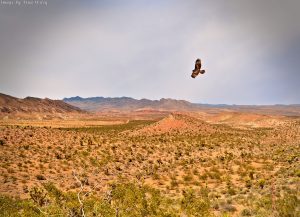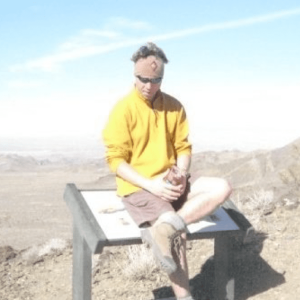One hundred years ago southern Nevada was an empty and—at least so far as humans go—fairly quiet place. Few would have guessed it was possible to put a massive urban area containing several million people in one of the driest spots in North America. But we did.
Doubtless Nevada’s population will only continue to swell. Many people move here for expanding economic opportunities, improving life for their families, just to have fun, to get away from harsh winters—the reasons are as varied as the individuals. Yet one thing many discover surprisingly after moving here is Nevada’s incredible, wild public lands. I am one of those people. And I’m openly thankful that decades ago some concerned Nevadans had the wisdom to set aside some of that wild space for the future—for people like me and no doubt, you.
We should continue that vision. We don’t know what this area will look like a century from now. No one has a crystal ball. But as thankful as we are to have these wilderness areas in which to play, explore, let children and our imaginations roam, and let Nevada’s wild denizens live out their destinies, they do not protect themselves. It takes work, public input, outreach, and getting people out onto the land to see what we have to safeguard. In its own way, wild Nevada is its best advocate.

Remember your first experience with Nevada’s wild magic. What awe might some future Nevadan feel as they drive away from the megacity Clark County may well one day become dry, open silence. It may seem like a different world, a newer one, or an older one, a reminder of what we once had—an experience they would want to return to again and again, as we do. But that cannot happen unless we remain strident in our demands that our public lands are worth protecting, and retaining, in their primitive states.
Let us not be like our neighbor Utah, where their state and Congressional delegations have fought every single National Park and Monument designation, even though those wild attractions bring in billions to state and local coffers—meaning not only jobs but jobs that are renewable, as long-lived as the public lands that support them. Check the numbers. The Outdoor Industry Association reported that in Nevada, $14.9 billion comes from consumer spending on outdoor recreation, leading directly to 148,000 jobs, $4.8 billion in wages and salaries, and $1 billion in state and local tax revenue. Every year more people look for opportunities to get away from the urban centers we more increasingly call home. Nevada’s share of that outdoor pie can only grow, including the jobs that come with it, if we vow to keep these areas open and undeveloped.
Of course it’s not just about jobs, it’s about the land and all the life that’s out there. So imagine, if you will, yourself a hundred years from now, standing on Virgin Peak or Mt. Irish: what would you like the future of Wild Nevada to look like? We need to fight to retain these open spaces in public hands, wilderness areas and National Monuments alike, so that vision can move from our minds and hearts into the eyes and lungs of our grandchildren.
I find it hard to believe they will not thank us for our foresight.

Bill Huggins is a proud 26-year resident of southern Nevada. He lives, works, writes, and explores Wild Nevada with his wife, daughter, and three rescue pups. He has published critical essays, short fiction, and environmental stories, but loves writing about Wild Nevada best.

